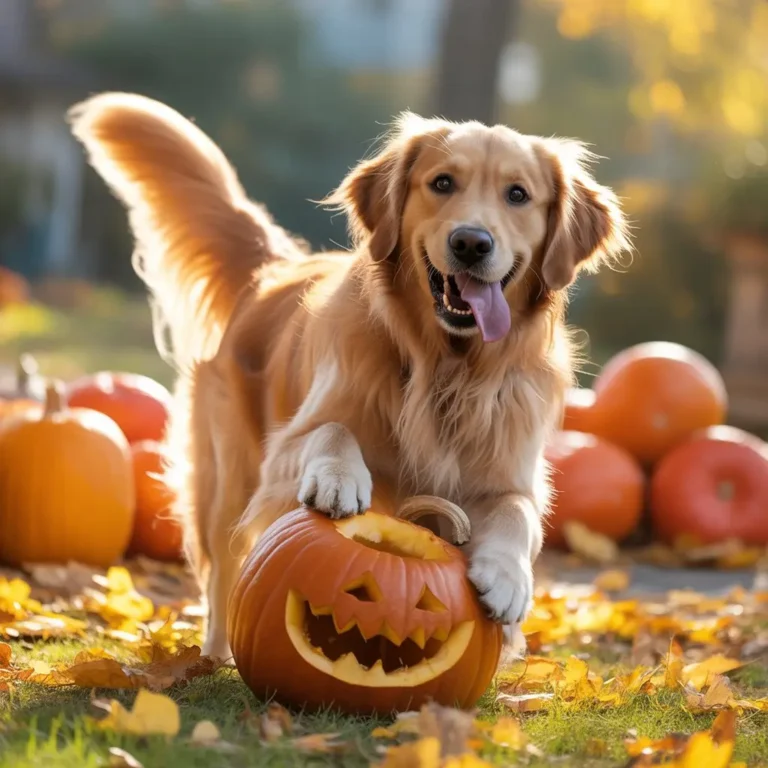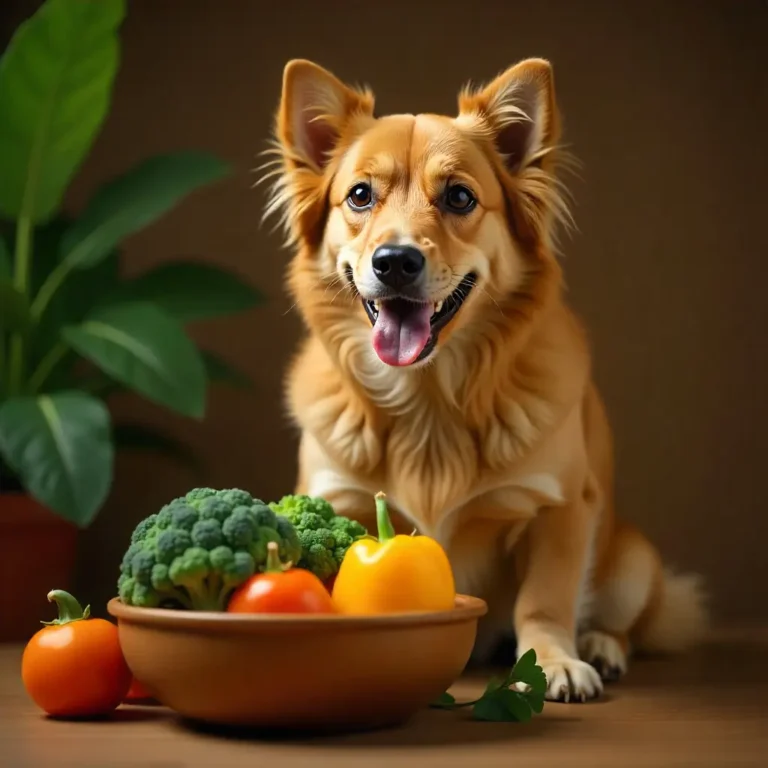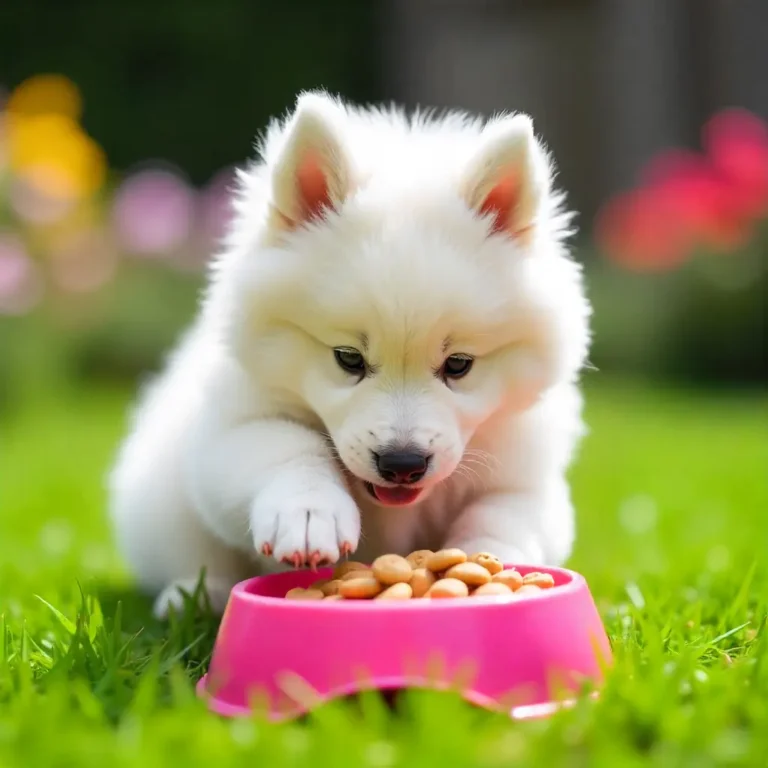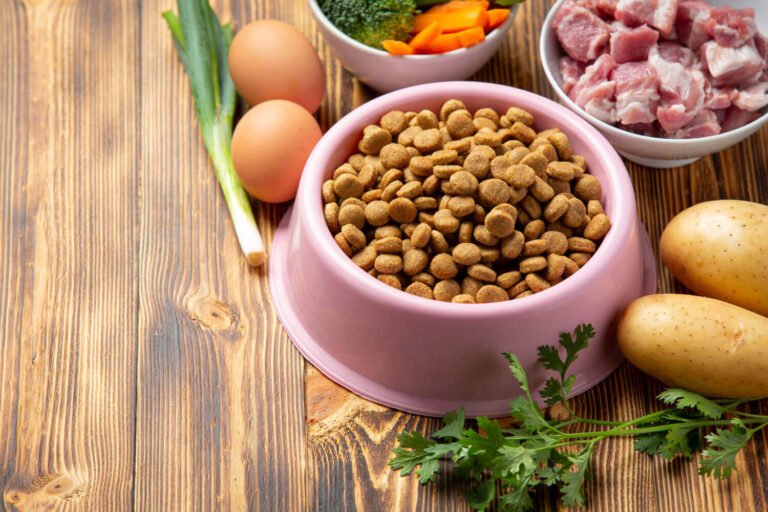It’s a common myth that the answer to “how much should I feed my dog” is printed on the bag.
That idea is convenient, but it’s not accurate for most dogs. Dog food labels give a starting point for an average dog. Your dog isn’t average. Age, breed, weight, activity and health change everything.
Feeding the right amount isn’t guesswork — it’s science. Small dogs burn more calories per pound. Large dogs need growth control to protect joints. Puppies need more frequent, calorie-dense meals. Seniors often need fewer calories and more joint support. That’s why personalized feeding matters.
This guide is vet-backed and written to give you clear, practical steps — not vague rules. I’ll show you what actually determines daily portions and how to adjust them. If you want a fast, accurate answer today, try our Dog Food Calculator Tool — it’s built around the same vet-approved formulas we explain here.
1. Why Feeding the Right Amount Matters
Feeding too much or too little isn’t just a numbers problem. It changes your dog’s health, mood, and lifespan.
Risk of overfeeding
Obesity: Extra fat raises the risk of diabetes, heart strain, and breathing problems.
Joint stress: Excess weight puts pressure on hips and knees, increasing arthritis and hip dysplasia risk in large breeds.
Shorter active life: Overweight dogs often tire sooner and play less.
Digestive upset & pancreatitis: Sudden high-fat meals or too many treats can trigger serious digestive issues.
Risk of underfeeding
Malnutrition: Not enough calories or protein leads to muscle loss, weak immune response, and slow recovery from illness.
Low energy & poor coat: A dog that looks dull, loses weight, or lacks energy may be underfed or missing nutrients.
Stunted growth in puppies: In growing dogs, underfeeding can harm bone and brain development.
Why balance matters (breed, age & lifestyle)
Breed differences: Small breeds typically need smaller, calorie-dense meals and small kibble. Large breeds need controlled calories and joint support.
Life stage matters: Puppies need more calories per pound than adults. Seniors usually need fewer calories but more joint and gut support.
Activity level shifts needs: A couch potato and a hiking buddy of the same weight need very different portions.
Medical and reproductive status: Spayed/neutered dogs often need fewer calories; dogs recovering from illness may need more or special diets.
Quick action tip:
Don’t just follow the bag. Start with a tailored estimate (we’ll walk you through the vet formula soon), or use the Dog Food Calculator Tool to find exact calories, grams, and cups for your dog.
For a reliable second opinion, check out respected external calculators like the DogFoodAdvisor Dog Food Calculator (based on Waltham nutrition standards), Purina’s Daily Portion Calculator (helps tailor portions based on product and lifestyle), the Pet Nutrition Alliance Calorie Calculator (veterinary-grade with body condition scoring), or the FeedReal Fresh Food Calculator (excellent for homemade fresh or raw diets).
Compare results and then weigh your dog monthly to adjust based on their body condition.
Dog Food Calculator Quick Comparison
| Calculator | Best For | Why Use It |
|---|---|---|
| Our Tool | Quick, accurate portioning | Vet formulas, treats, meals/day, kcal/cup customization |
| DogFoodAdvisor | Basic calorie/cup estimate | Based on Waltham’s nutritional data |
| Purina Calculator | Brand-specific feeding | Tailored guidance using Purina formulas |
| PNA Calorie Calculator | Clinical assessment | Includes body condition scoring and print report |
| FeedReal | Fresh/raw feeding | Designed for calculating homemade diet portions |
2. Key Factors That Affect How Much to Feed Your Dog
Feeding your dog isn’t just about scooping kibble—it’s about matching nutrition to their unique needs. The right portion size depends on several key factors:
. Dog’s weight (actual vs. ideal)
A healthy weight is the foundation of a long, happy life. If your dog is overweight or underweight, their feeding needs will be different. Always start by knowing their ideal weight, not just their current one.
. Age group: Puppy vs. Adult vs. Senior
Puppies burn calories faster and need more frequent, nutrient-rich meals. Adults require maintenance portions, while seniors may need fewer calories but higher-quality protein to support muscle mass.
. Activity level (low, normal, high)
A couch-loving lap dog will need fewer calories than an agility champion or working farm dog.
. Neutered/spayed status
Spayed and neutered dogs often have slightly lower energy needs, meaning overfeeding can easily lead to weight gain.
. Breed and metabolism differences
Some breeds—like Border Collies—have naturally high metabolisms, while others—like Bulldogs—burn energy more slowly.
. Health conditions (allergies, digestive issues, chronic illnesses)
Dogs with certain health problems may require specialized diets and carefully measured portions.
Pro tip:
Your dog’s feeding needs will change over time, so reassess portions every few months—or sooner if you notice changes in weight or energy.
3.General Dog Feeding Guidelines (Daily Caloric Needs)
While every dog is different, here’s a vet-backed reference table for approximate daily caloric needs based on weight and life stage:
| Dog’s Weight | Puppy (up to 12 months) | Adult (1–7 years) | Senior (7+ years) |
|---|---|---|---|
| 10 lbs (4.5 kg) | 400–500 kcal | 300–400 kcal | 250–350 kcal |
| 25 lbs (11 kg) | 800–900 kcal | 600–700 kcal | 500–600 kcal |
| 50 lbs (23 kg) | 1400–1600 kcal | 1200–1400 kcal | 1000–1200 kcal |
| 75 lbs (34 kg) | 2000–2200 kcal | 1800–2000 kcal | 1500–1700 kcal |
Examples:
A small breed adult dog (10 lbs) typically needs around 300–400 kcal/day.
A large breed puppy (50 lbs) may need 1200–1400 kcal/day for healthy growth.
Dog feeding chart 2025: Daily food amounts by weight and life stage.
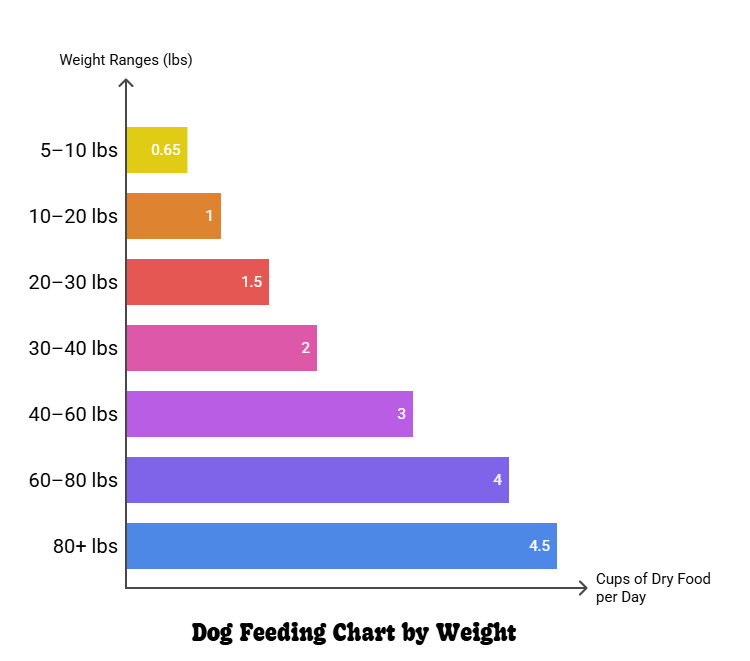
Important:
These are general guidelines. The exact amount will depend on your dog’s activity level, metabolism, and health.
4. Vet-Backed Formula: How to Calculate Your Dog’s Daily Calories
One of the most accurate ways to determine how much your dog should eat is by using veterinary nutrition formulas. This method works for all breeds and sizes — you just need your dog’s weight and an understanding of their activity level.
Step 1: Calculate the Resting Energy Requirement (RER)
The RER estimates the number of calories your dog needs at rest, just to maintain vital body functions like breathing and circulation.
Formula:
RER = 70 × (Body weight in kg)^0.75
Example:
If your dog weighs 20 kg:
Raise 20 to the power of 0.75 = 8.91
Multiply by 70 = 623.7 kcal/day (RER)
This means your dog burns about 624 calories a day at complete rest.
Step 2: Apply the Maintenance Energy Requirement (MER) Multiplier
Your dog’s MER accounts for daily activity, age, and lifestyle. Multiply the RER by the right factor:
| Dog Type / Life Stage | MER Multiplier |
|---|---|
| Neutered adult | 1.6 × RER |
| Intact adult | 1.8 × RER |
| Active/working dog | 2.0–5.0 × RER |
| Puppy (0–4 months) | 3.0 × RER |
| Puppy (4 months to adult) | 2.0 × RER |
| Weight loss | 1.0 × RER |
| Weight gain | 1.2–1.8 × RER |
| Senior (less active) | 1.2–1.4 × RER |
Step 3: Example Calculation Walkthrough
Let’s calculate for our 20 kg neutered adult dog:
RER: 624 kcal/day
MER multiplier: 1.6 (neutered adult)
MER: 624 × 1.6 = 998 kcal/day
This dog should start with ~1,000 kcal/day from all meals and treats combined. Adjust monthly based on weight and body condition.
Pro Tip:
Always recheck your dog’s weight every 2–4 weeks.
If they’re gaining or losing unexpectedly, adjust portions by 5–10%.
For precision, use a digital kitchen scale to measure food in grams.
5. Or Let an Online Calculator Handle It
If you’d rather skip the measuring cups and number crunching, online dog food calculators can give you a quick, tailored feeding estimate.
Simply enter your dog’s details — weight, age, activity level — and get instant guidance on how much to feed.
Vet-Inspired: Many use formulas developed by animal nutrition experts
Quick & Easy: No need to read charts or do manual math
Flexible: Works for dry, wet, or raw diets
6. Measuring Cups vs. Calories: Why Kcal Matters
Feeding your dog isn’t just about scooping kibble — it’s about measuring the right energy intake.
Many pet parents follow the feeding chart on the bag without realizing:
Calorie content per cup varies between brands
Wet, dry, and raw foods all have different calorie densities
“One cup” can mean 200 kcal in one brand and 400 kcal in another
Pro Tip:
Always check your dog food label for kcal per cup (or per can) and adjust portions accordingly. Measuring by calories instead of just volume keeps your dog’s diet consistent and healthy.
7. Feeding Schedules & Meal Splits
Feeding the right amount is important — but when you feed also matters. Dogs thrive on routine, and splitting meals can aid digestion, maintain energy, and prevent bloating. For a more detailed guide on choosing the best dog food by breed, budget, allergies, and life stage, read our Best Dog Food 2025: The Ultimate Guide.
Meal Frequency by Age:
Puppies (under 6 months): 3–4 meals per day
Adults (1–7 years): 2 meals per day
Seniors (7+ years): 1–2 smaller meals per day
Best Times to Feed:
Morning & evening for adults
Every 4–6 hours for puppies
Avoid heavy meals right before intense activity
Consistency is key — feeding at the same times each day helps regulate digestion and appetite.
8. Should You Include Treats?
Treats are part of the joy of having a dog — but they can quickly tip the calorie balance if you’re not careful.
How much treat intake is okay (10% rule)
Vets generally recommend that treats make up no more than 10% of your dog’s total daily calories. This keeps your pet happy without affecting their weight or nutrition balance.
Adjusting daily calories if treats are given
If you give your dog treats during training or just for fun, reduce their main meal portions slightly to avoid overfeeding. For example, if your dog’s daily calorie goal is 600 kcal, treats should be capped at 60 kcal, and food adjusted accordingly.
Healthier treat alternatives
Instead of high-calorie biscuits, try:
Fresh carrot sticks
Apple slices (no seeds)
Freeze-dried lean meats
Small pieces of your dog’s regular kibble as training rewards
9.Pro Tips from Vets
Here’s what veterinarians recommend for healthy, sustainable feeding:
Monitor weight monthly and adjust feeding – Small changes add up over time, so check weight regularly.
Regular Body Condition Scoring (BCS) – Use a vet’s scoring chart to keep track of your dog’s ideal physique.
Transition slowly between food types – Sudden changes can cause stomach upset; switch gradually over 7–10 days.
Always provide clean water – Hydration is as important as nutrition.
10. When to Talk to Your Vet
Don’t wait until a small issue becomes a big problem. Speak to your vet if you notice:
Unexplained weight changes
Signs of overfeeding or underfeeding (bloated belly, visible ribs, low energy)
Chronic digestive issues like vomiting, diarrhea, or constipation
A need for custom feeding plans due to medical conditions (kidney disease, diabetes, allergies, etc.)
FAQs on “How Much Should I Feed My Dog?”
Got questions? You’re not alone — feeding your dog the right amount can feel tricky with all the conflicting advice out there. To make things easier, we’ve answered the most common questions dog owners have about meal portions, feeding schedules, and diet choices.
How do I know exactly how much food my dog needs?
Start with their Resting Energy Requirement (RER), which depends on weight, then adjust for age, activity level, and health. You can use a trusted vet-recommended feeding chart or consult your veterinarian to fine-tune portions for your dog’s unique needs.
Why shouldn’t I rely only on the feeding guide on the bag?
Those charts are averages for “typical” dogs, but yours may burn more or fewer calories. For example, a 40-lb couch potato may eat 20% less than the label suggests, while an active herding dog may need 30% more.
How many calories should my dog get daily?
Most healthy adult dogs need 25–30 calories per pound per day. Puppies, working dogs, and some small breeds may need more; seniors and low-activity dogs often need less.
How do I adjust food if my dog needs to lose or gain weight?
For weight loss: feed 10–20% fewer calories and weigh weekly. For weight gain: add 10–15% more food and monitor muscle condition. Make changes gradually to avoid digestive upset.
Does breed affect feeding needs?
Absolutely. Border Collies and Huskies burn more per pound than Bulldogs or Basset Hounds. Size matters too — small breeds often need more calories per pound than large breeds.
How does spaying or neutering affect food requirements?
After the procedure, metabolism can drop by up to 25%. To prevent weight gain, monitor body condition and adjust portions downward if needed.
Should I feed wet or dry food?
Neither is “better” — it’s about your dog’s needs. Wet food adds hydration and is softer for dental issues. Dry food is more calorie-dense and easier to store. Some owners use a mix for balance.
Is it better to measure food in cups or grams?
Always grams if possible — cups vary depending on kibble shape and scoop size. Even being off by 10% each meal can cause weight gain over months.
How many meals per day is best?
Puppies: 3–4 meals/day
Adults: 2 meals/day
Seniors: 1–2 meals/day
Consistency in timing helps digestion and reduces begging.
Can I give treats without throwing off my dog’s diet?
Yes — but keep treats under 10% of daily calories. Adjust the main meal portion to account for treat calories.
How can I tell if I’m overfeeding or underfeeding?
Check the Body Condition Score (BCS) monthly. You should feel ribs easily but not see them (except in sighthounds). Sudden weight change = adjust feeding.
Should feeding change with seasons or activity?
Yes — many dogs need more calories in winter (to stay warm) or during high-activity months, and less during lazy summer periods.
Final Thoughts
Feeding your dog isn’t just about scooping kibble into a bowl — it’s about customizing their diet to their unique age, breed, lifestyle, and health needs.
Reassess feeding amounts regularly
Keep an eye on weight & body condition
Don’t forget to factor in treats
Use vet-backed tools for accuracy

